Khamûl wrote:
Haven't listened to the interview (read this elsewhere), but is Sibley saying that the genesis of this volume was before Amazon's RoP series i.e. countering the obvious inference that HC concocted this release in response to the TV show?
The timing of the book release is obviously to do with the TV show, but nothing else about the book is. I think it is good that it has been released now, as it allows some of the material in Aelfwine's edition of The Nature of Middle-earth to be incorporated, but it could have been released at really any point after HoMe was published.
A poster on Reddit reports that there are quality issues with their copy. Worth checking each illustration over.
ibid wrote:
The convention being used is that the first time each source gets used in the notes the abbreviation is given alongside the full name and then subsequent uses only use the abbreviation.
Introduction note 1 - Letters
Introduction note 4 - Peoples
Year 1 note 1 - Appendix B
Year 1 note 3 - Rings
Year 1 note 7 - Akallabêth
and so on
Thank you, indeed, that is exactly what has been used.
For this episode, we were honored to welcome a very influential figure in the Tolkien fandom: Brian Sibley!
Brian is the recipient of the Tolkien Society’s award for Outstanding Contribution in 2022. He is an honorary member of the society, and is perhaps best known to the Tolkien community because of the radio adaptation of The Lord of the Rings he created for the BBC. His newest project The Fall of Númenor is a book that pulls together Tolkien’s writings about the island civilization and promises to be an insightful and essential text! We hope you enjoy the interview!
I thought I would post a few comparison photos of my UK HarperCollins Fall of Numenor (printed in Italy) to my US William Morrow copy (printed in China). The HC is the top book, WM the bottom.
The books overall are mostly identical. But it appears (to me) that the HC copy has a slightly more reddish cast in many of the images (and also the endpapers).
The books overall are mostly identical. But it appears (to me) that the HC copy has a slightly more reddish cast in many of the images (and also the endpapers).
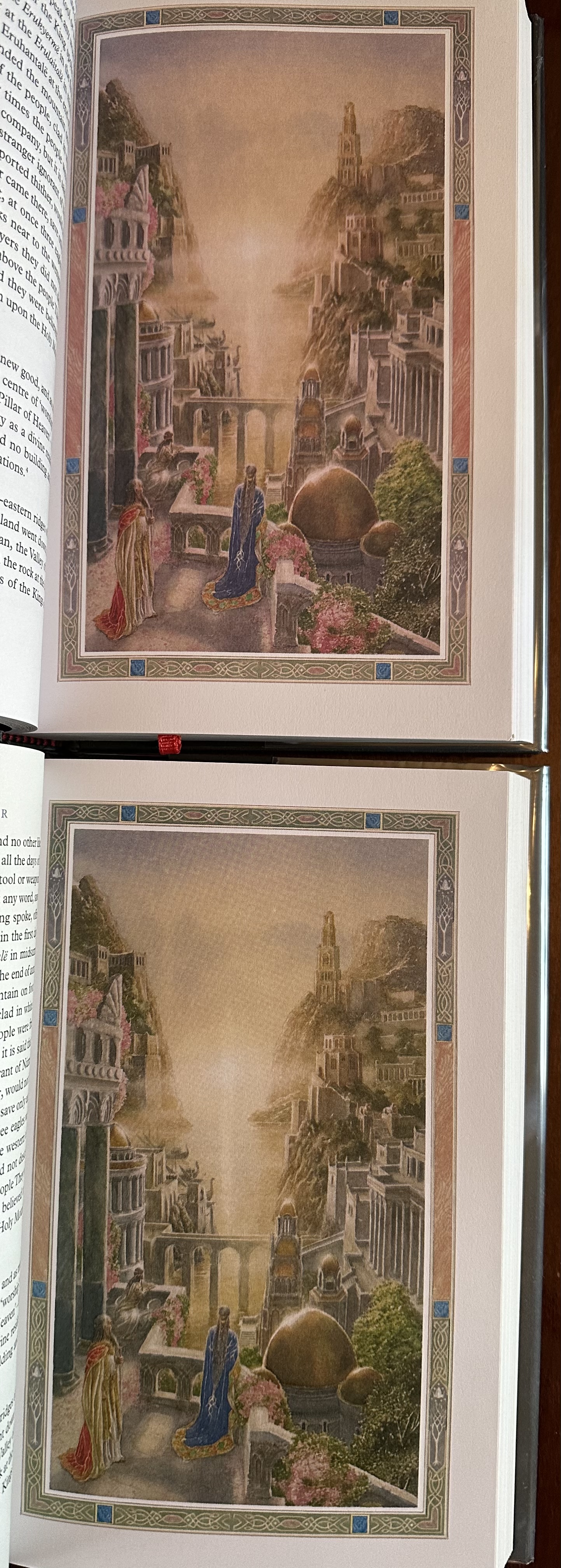
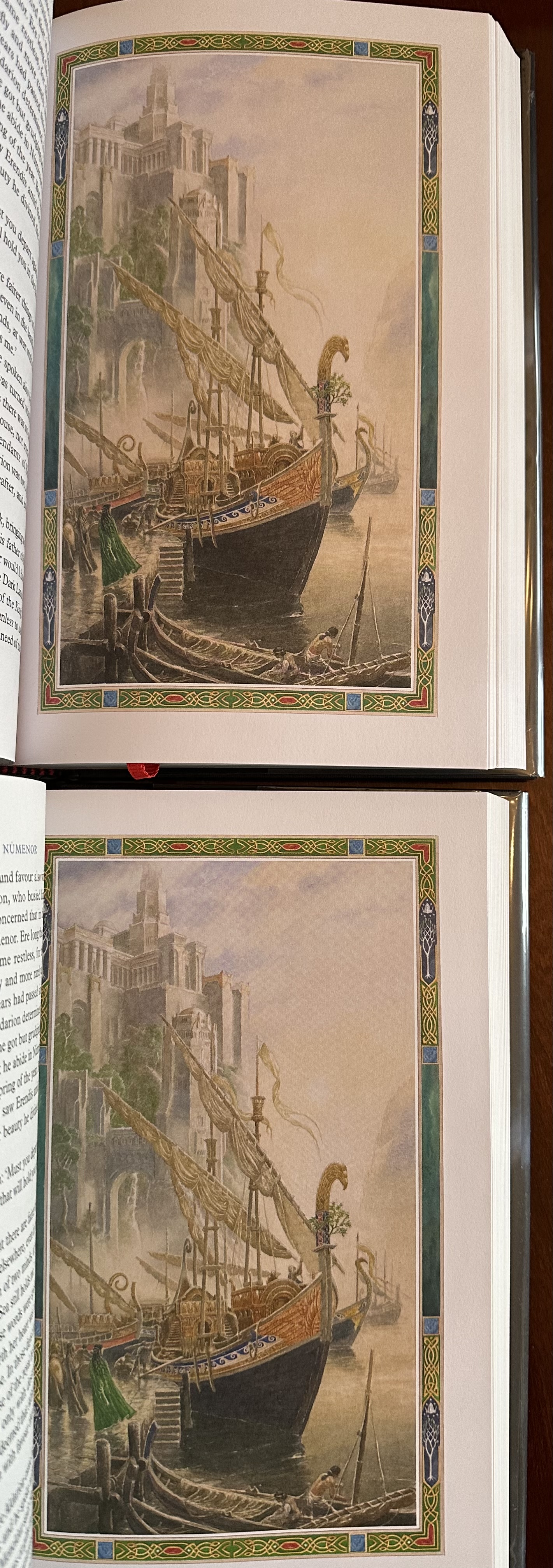
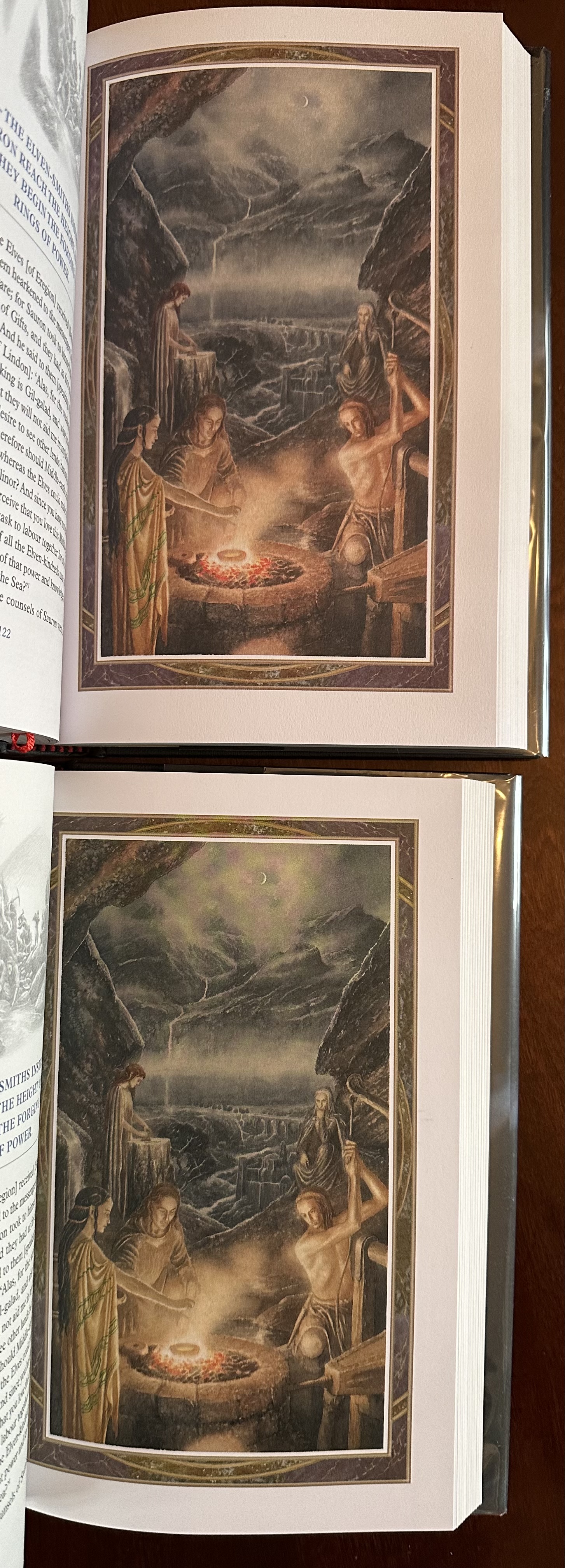
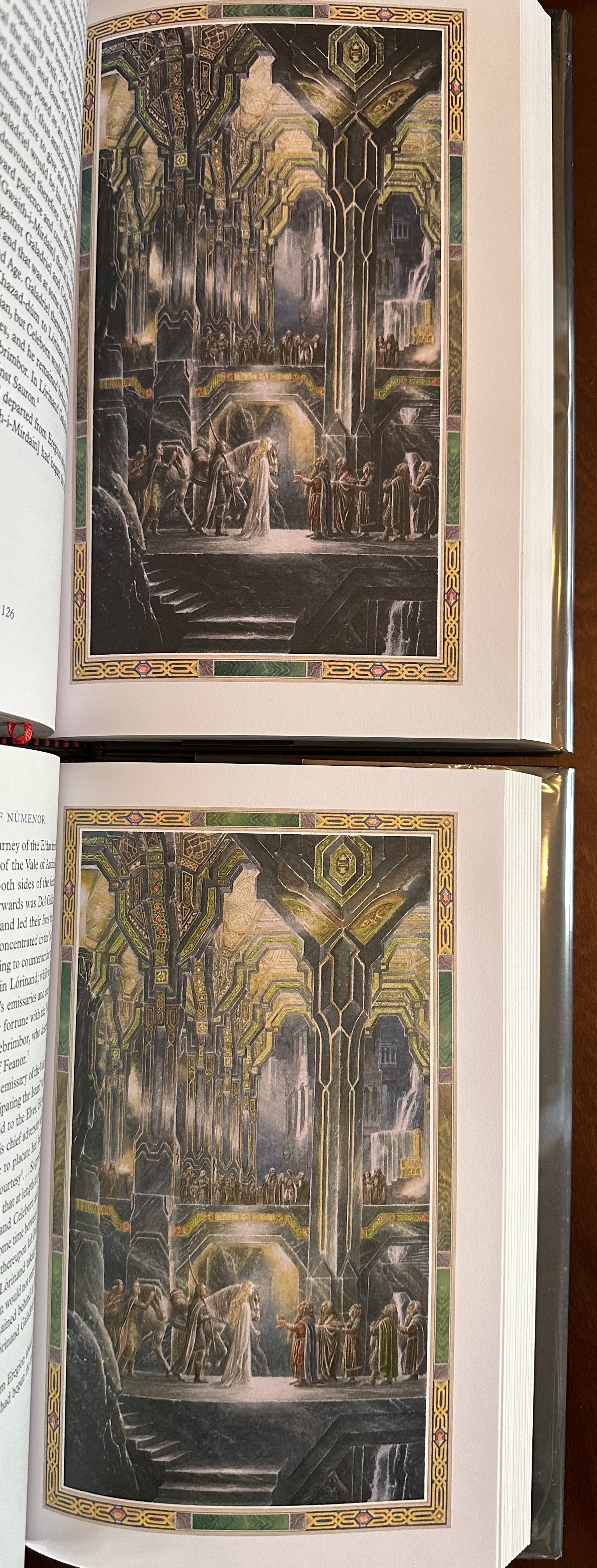
I've begun to post comments on the book at the Science Fiction and Fantasy Chronicles Forums. I've just begun reading...
The Fall of Númenor is an arrangement of already published material by Tolkien that relates to the Second Age, so the primary value of the book will be the convenience of having these texts brought together in one place, from The Lord of the Rings, The Silmarillion, Unfinished Tales, and The History of Middle-earth. I'm a bit surprised by inadequate proofreading, which is not a problem one encountered with the books edited by Christopher Tolkien. For example, we have "council" when "counsel" is meant, "if" for "of," and "his" for "him" in the first 50 pages. Comma usage is erratic in the early editorial pages.
The Fall of Númenor is an arrangement of already published material by Tolkien that relates to the Second Age, so the primary value of the book will be the convenience of having these texts brought together in one place, from The Lord of the Rings, The Silmarillion, Unfinished Tales, and The History of Middle-earth. I'm a bit surprised by inadequate proofreading, which is not a problem one encountered with the books edited by Christopher Tolkien. For example, we have "council" when "counsel" is meant, "if" for "of," and "his" for "him" in the first 50 pages. Comma usage is erratic in the early editorial pages.
Dale Nelson wrote:
I've begun to post comments on the book at the Science Fiction and Fantasy Chronicles Forums. I've just begun reading...
The Fall of Númenor is an arrangement of already published material by Tolkien that relates to the Second Age, so the primary value of the book will be the convenience of having these texts brought together in one place, from The Lord of the Rings, The Silmarillion, Unfinished Tales, and The History of Middle-earth. I'm a bit surprised by inadequate proofreading, which is not a problem one encountered with the books edited by Christopher Tolkien. For example, we have "council" when "counsel" is meant, "if" for "of," and "his" for "him" in the first 50 pages. Comma usage is erratic in the early editorial pages.
It can't hurt to note down what you are finding, I'm sure they can get corrected in a future printing.
Given that "Celebrimbor and his fellow-smiths... formed a society or brotherhood... the Gwaith-i-Mirdain," I was puzzled by the inclusion in Lee's picture of the Elf-smiths of a couple of Elf-women (picture is reproduced in an earlier posting on this thread).
Dale Nelson wrote:
Given that "Celebrimbor and his fellow-smiths... formed a society or brotherhood... the Gwaith-i-Mirdain," I was puzzled by the inclusion in Lee's picture of the Elf-smiths of a couple of Elf-women (picture is reproduced in an earlier posting on this thread).
I’ve noticed a number of inconsistencies between the text and Lee’s illustrations in the past, like Tuor having hair that can only be described as not golden, and him still holding his spear when he meets Ulmo, even though in the narrative he had already equipped himself with the sword etc. left for him by Turgon. So, ya know, not unprecedented for him.
There is nothing inherently "gendered" in the Sindarin word gwaith, which just means "people" (in a regional or cultural sense) or "society". Nor for that matter is there truly anything specifically "gendered" in the English word "brotherhood" (any more than there is in the word "mankind"), which can be and is applied to organizations and societies that have female members. While Tolkien stipulates broad tendencies as to what interests and occupations are favored by the two genders in Middle-earth, it's also clear that these are not hard-and-fast rules.











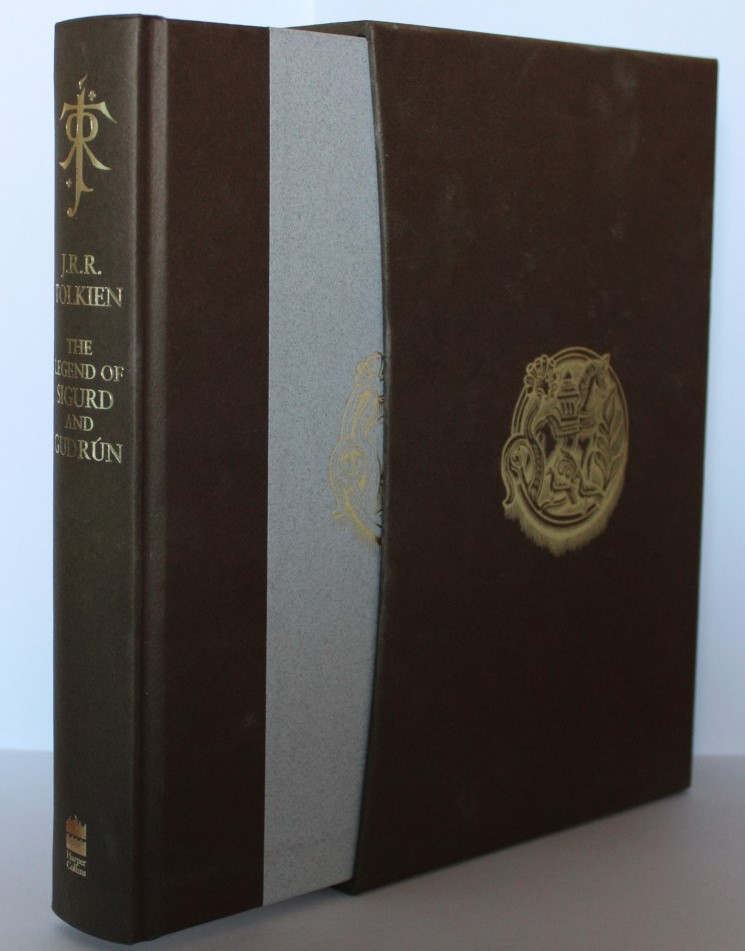
 100
100 25.37K
25.37K